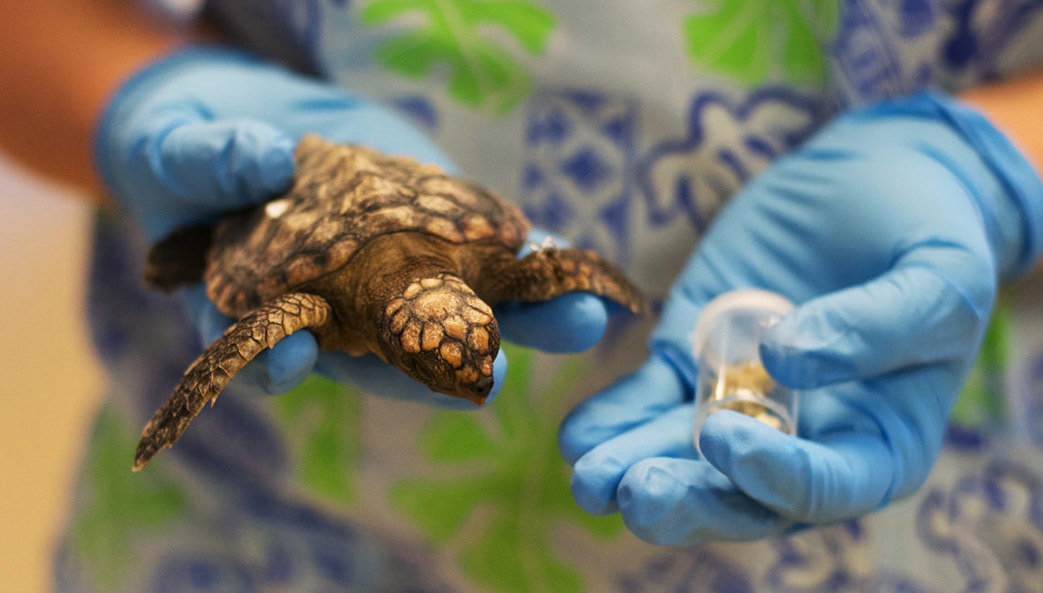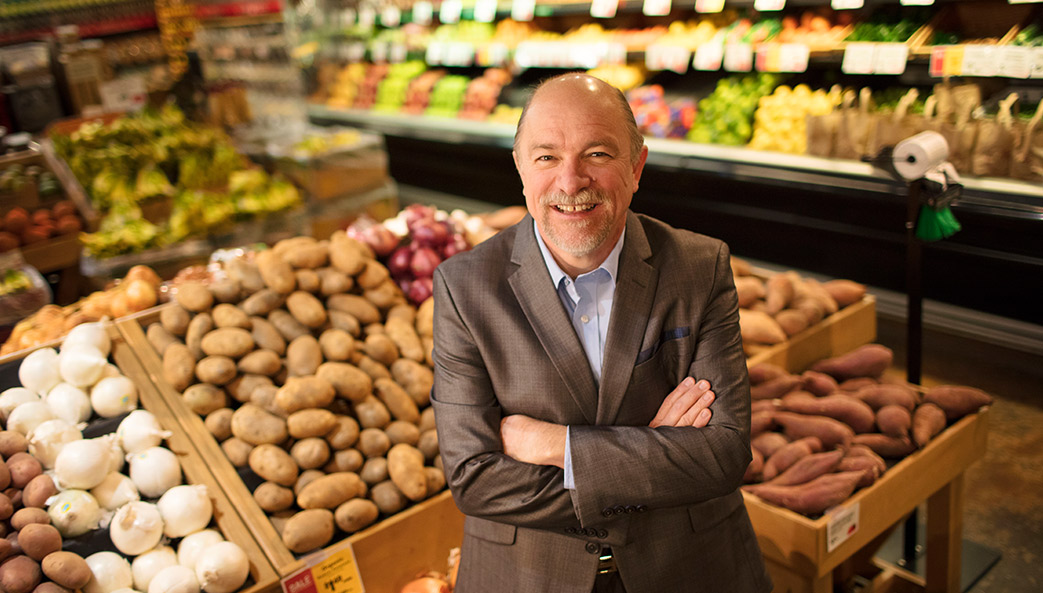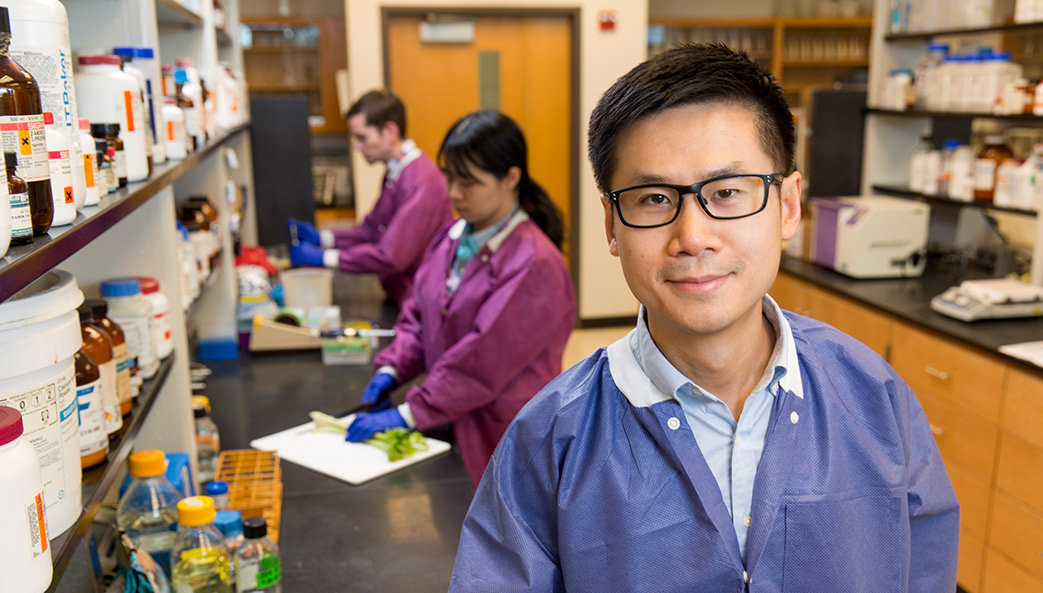Ingestion of degrading ocean plastics likely poses a substantial risk to the survival of post-hatchling sea turtles, according to new research from UGA and the Loggerhead Marinelife Center. The study also suggests that micronizing plastics could have tremendous negative implications for the ocean’s food web.
As plastic waste has accumulated in the marine environment, reports describing ingestion of plastics by sea turtles have increased. Plastic is now the most common form of marine debris. Globally, at least 690 marine species—including sea turtles, seabirds, seals, sea lions, whales, fish and invertebrates—have become ill or died following entanglement in or ingestion of plastics.
“We may be in the early phases of the first micronized plastic waste-associated species population decline or extinction event,” says co-author Branson Ritchie, a veterinarian in exotic and wildlife medicine and director of technology development and implementation for the UGA New Materials Institute. “An even bigger issue is what micronizing plastics are doing to the ocean’s ecosystem. As ocean plastics continue to micronize, smaller and smaller particles are being consumed by the smallest creatures in our oceans, which compromises the entire food chain, because the plastic in these animals inhibits their ability to uptake the nutrients they need to survive.”
The researchers collected 96 post-hatchling sea turtles that had washed back onto beaches along Florida’s Atlantic coastline. Nearly half of the turtles were rehabilitated by LMC and released back into the ocean. During rehabilitation, all passed some amount of plastic, says co-author and licensed veterinary technician Samantha Clark, who cared for the turtles.
The remainder of the collected turtles died, and 27 of these were examined. Ninety-three percent had some amount of ingested plastic particles in them, leading the team to theorize that many died due to blockages or nutritional deficiencies associated with plastic ingestion.
“Sea turtles are known to mistake ocean plastics for prey, like crab or fish eggs, or in the case of larger sea turtles, floating plastic bags for jellyfish,” Clark says.
The team’s findings, published in Environmental Science and Technology, suggest that far fewer post-hatchlings may be surviving long enough to reproduce, according to co-author Charles Manire, veterinarian and LMC director of research and rehabilitation.
“This has devastating implications for the seven species of sea turtles struggling to survive,” he says. “If other sea turtle populations are experiencing similar mortality rates, we predict that there will be insufficient numbers of sea turtle hatchlings reaching sexual maturity to offset natural and other human-associated losses.”
The plastic particles, once ingested, may continue to deteriorate. The team found particles ranging from millimeter-sized fragments to nanoparticles that measured on average 52 nanometers.
“Of these larger mesoparticles, 54.1 percent of what we found were polyethylene and 23.7 percent were polypropylene,” says Evan White, lead author and assistant research scientist at the institute.
Polyethylene and polypropylene are the first and second most commonly produced plastics, respectively, and often are used for food packaging.
The research team also included Jason Locklin and Shunli Wang of the New Materials Institute and UGA undergraduate Benjamin Crawford.
This story appeared in the spring 2019 issue of Research Magazine. The original story is available at https://news.uga.edu/micronizing-ocean-plastics-threatens-sea-turtles/.






